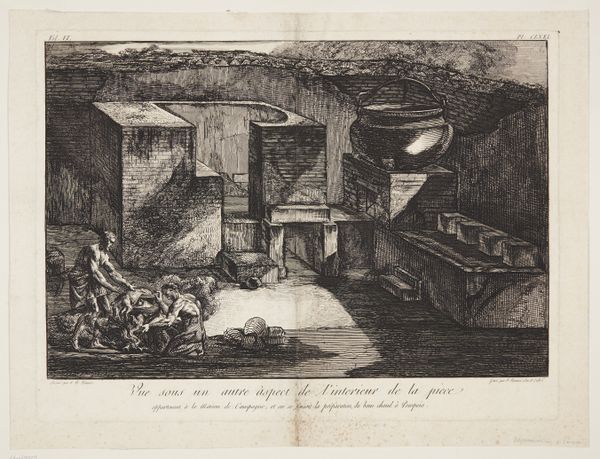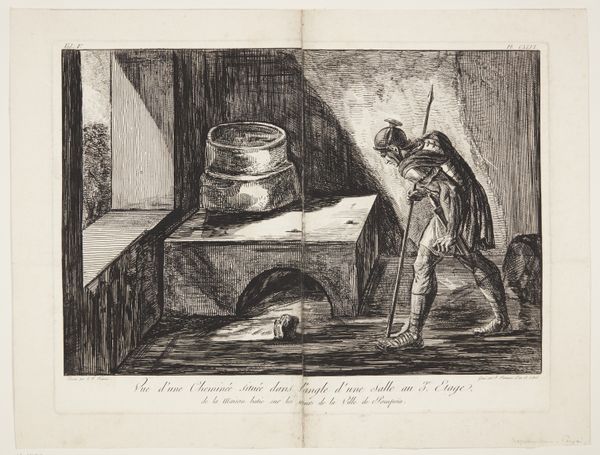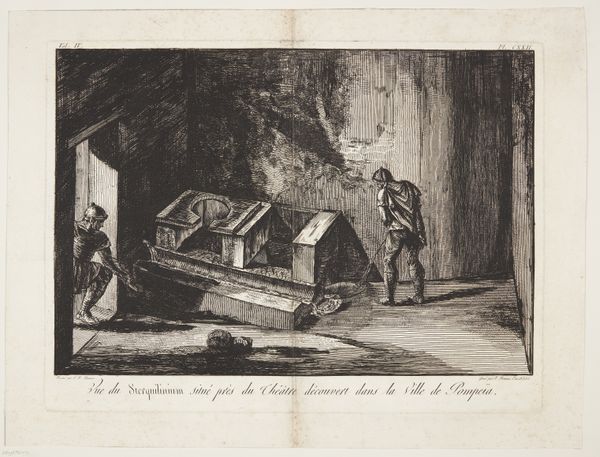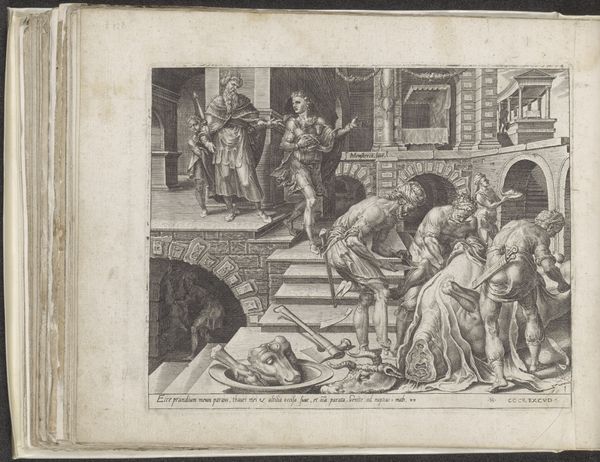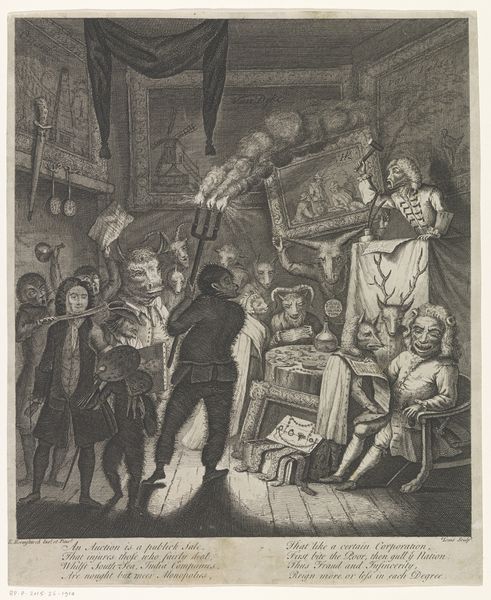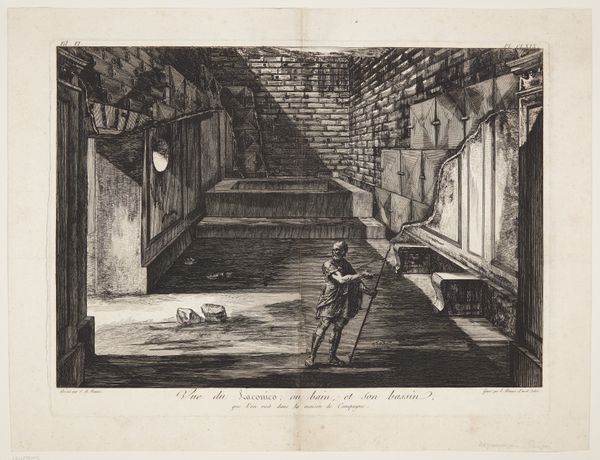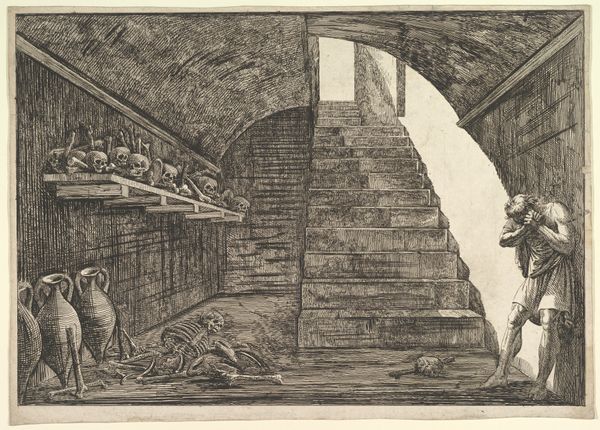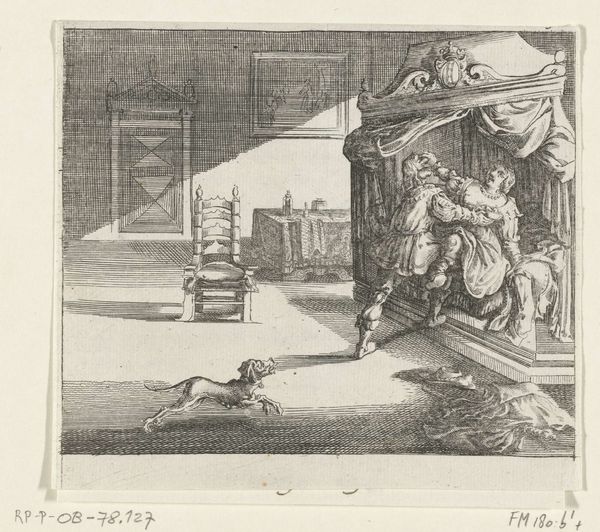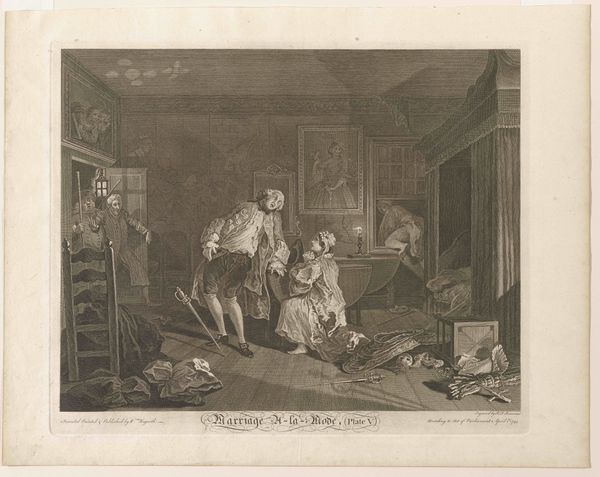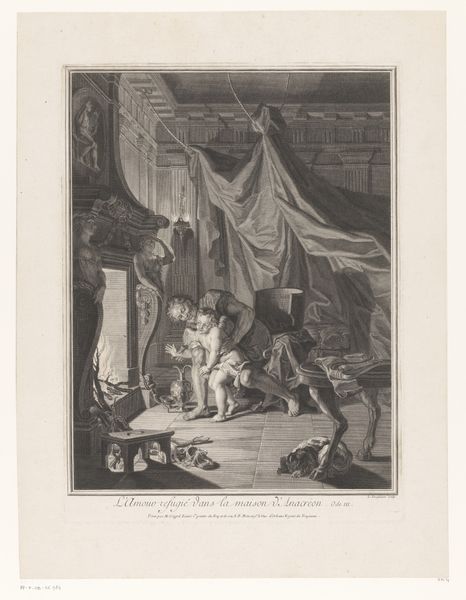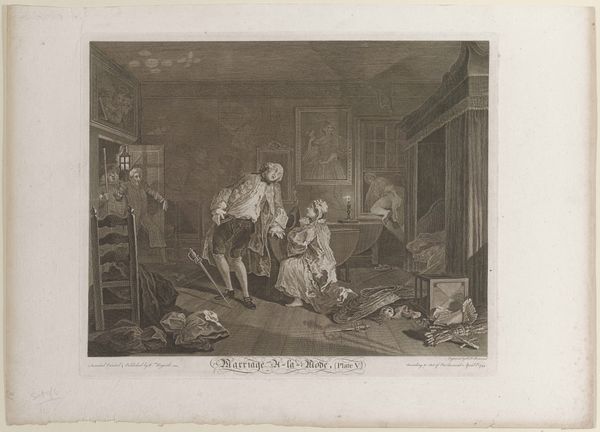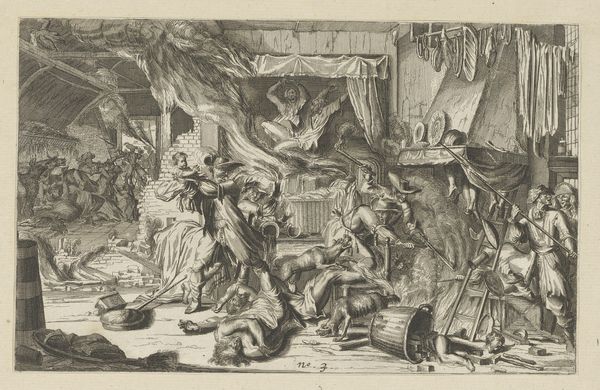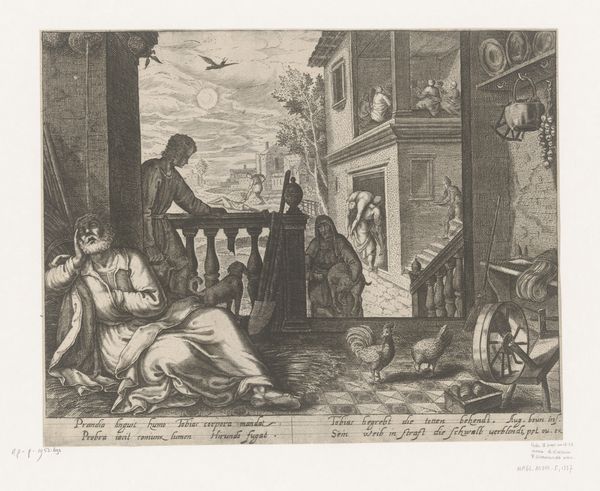
Vue de la Cave spacieuse ou Cantine, qui regnoit sous les trois Ailes du Cavedium, cour de la Maison de Campagne à Pompeiia 1805
0:00
0:00
print, etching, engraving
#
neoclacissism
# print
#
etching
#
history-painting
#
engraving
Dimensions: 429 mm (height) x 579 mm (width) (plademaal)
Editor: So this is Francesco Piranesi’s "Vue de la Cave spacieuse ou Cantine…" It’s an etching and engraving from 1805, depicting a cellar or canteen in Pompeii. It's filled with bones and a rather distraught figure. What strikes me is how theatrical it feels, almost staged. How do you interpret this work in its historical context? Curator: You're right, there’s a dramatic flair. Consider that this was made during the Neoclassical period, a time of renewed interest in classical antiquity fueled by archaeological discoveries like Pompeii. But more importantly, how did artists choose to *represent* these finds, and to what public? Piranesi and others weren't just documenting; they were shaping the perception of antiquity. The carefully arranged bones, the contrasting light, the distressed figure... What effect do you think those choices produce? Editor: It makes me think about mortality and the fragility of civilization, like a staged memento mori. Curator: Precisely. Think about the market for these prints. Who were buying them? Aristocrats and Grand Tourists sought tangible connections to the past, but also experiences packaged for them to consume. Piranesi presents Pompeii as a scene from a play, one filled with both the wonder of discovery, and the darkness of its sudden end. He crafts a very *specific* narrative of loss, and a political message: perhaps even a commentary on contemporary social vulnerabilities masked by glorifying a grand Roman past. Do you see echoes of contemporary political discourse? Editor: It’s becoming much clearer to me. I hadn’t thought about it in terms of constructing a particular historical narrative. The 'stage' presents a very selected point of view. Curator: Exactly! This artwork does more than depict a place. It reflects and reinforces how the past is understood, consumed, and instrumentalized for social and political purposes. Editor: That’s fascinating. I’ll never look at archaeological depictions the same way again. Thanks!
Comments
No comments
Be the first to comment and join the conversation on the ultimate creative platform.
